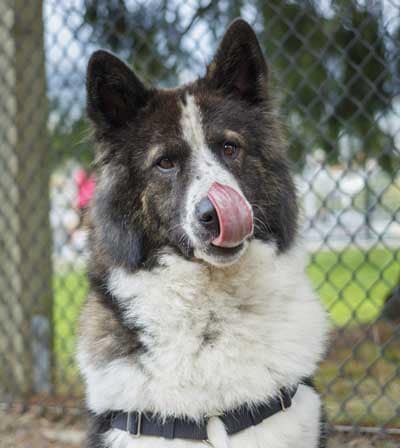
-
Find the right food for your petTake this quiz to see which food may be the best for your furry friend.Find the right food for your petTake this quiz to see which food may be the best for your furry friend.Featured products
 Hill's Science Diet Adult Chicken & Beef Entrée Dog Food
Hill's Science Diet Adult Chicken & Beef Entrée Dog FoodChicken & Beef Entrée in a delicious loaf with complete & balanced nutrition to help keep adult dogs active and healthy
Shop Now Adult Large Breed Chicken & Barley Recipe Dog Food
Adult Large Breed Chicken & Barley Recipe Dog FoodSupports healthy joints, lean muscle, and beautiful coat for large breed dogs
Shop Now Adult Chicken & Barley Recipe Dog Food
Adult Chicken & Barley Recipe Dog FoodSupports lean muscle and beautiful coat for adult dogs
Shop NowFeatured products Adult Tender No Corn, Wheat, Soy Chicken & Vegetables Stew Cat FoodShop Now
Adult Tender No Corn, Wheat, Soy Chicken & Vegetables Stew Cat FoodShop Now Adult Turkey & Liver Entrée Cat Food
Adult Turkey & Liver Entrée Cat FoodPrecisely balanced nutrition with the delicious taste of minced turkey & liver to help fuel the energy needs of cats during the prime of their life
Shop Now Senior Vitality Adult 7+ Tuna & Vegetables Stew
Senior Vitality Adult 7+ Tuna & Vegetables StewImproves Everyday Ability to Get Up & Go
Shop Now -
Dog
- Dog Tips & Articles
-
Health Category
- Weight
- Food & Environmental Sensitivities
- Urinary
- Digestive
- Joint
- Kidney
-
Life Stage
- Puppy Nutrition
- Adult Nutrition
- Senior Nutrition
Cat- Cat Tips & Articles
-
Health Category
- Weight
- Skin & Food Sensitivities
- Urinary
- Digestive
- Kidney
-
Life Stage
- Kitten Nutrition
- Adult Nutrition
Featured articles What Is Littermate Syndrome? Pet Adoption Guide
What Is Littermate Syndrome? Pet Adoption GuideLearn more about littermate syndrome in dogs and cats and how to successfully navigate adoption and early socialization processes.
Read More The Science Behind Our Love for Pets
The Science Behind Our Love for PetsLearn the scientific reasons why we have such strong connections with our pets, and what science says about the love between humans and our furry friends.
Read More How to Properly Mix Wet & Dry Pet Foods
How to Properly Mix Wet & Dry Pet FoodsAn Orange cat eating from a bowl filled with mixed food
Read More -


You know what to do when your dog drools, but what do you do when he suddenly stops drooling? If your dog is experiencing dry mouth, there could be more serious underlying issues. Learning the possible causes and treatments of dog dry mouth can help you keep your pup at his best.
Xerostomia in Dogs: What Is Dry Mouth?
Dog drool may seem gross at times, but it is a sign that your dog is producing saliva. Saliva helps keep a dog's mouth comfortable. If you're not seeing any slobbering and your dog's mouth seems to be dry, your four-legged companion may have dry mouth, also known as xerostomia. Without liquid washing over the teeth to keep them clean, this condition can cause bad breath in both dogs and people. It's not always painful, but xerostomia in dogs can affect swallowing and eating. Besides bad breath, dogs with dry mouth may have sticky, dry-feeling gums, notes Wag!.
It is important to monitor your dog from head to toe on a regular basis. During a wellness visit you may want to ask your veterinarian about normal levels of saliva. If he has dog dry mouth, is it related to his breed, age, diet or something more serious? If your dog's bad breath and dry mouth seems to be getting worse or causing your pet to act differently, then a special trip to the vet is a good idea. It's always better to be safe than sorry, so if something just doesn't seem right, schedule an appointment as soon as you can.

Common and Uncommon Causes of Dog Dry Mouth
Dog dry mouth can come from a wide variety of environmental and health conditions:
- Dehydration. This can present itself as a dry dog nose or dry mouth. Dehydration can be dangerous if left untreated, so make sure your dog is drinking plenty of water and has fresh water available at all times. If he seems weak or is having difficulty breathing, take him to the vet right away.
- Reaction to medication. Certain veterinary medications, such as antihistamines, can cause xerostomia in dogs, according to thepetvet.com. If the medication is something your dog will be on long-term, talk with your vet about other options or ways to treat dry mouth concurrently.
- Cancer treatment. The American Animal Hospital Association notes that "although pets may experience some side effects of treatment, those symptoms are typically milder than symptoms that humans experience, and many pets go into remission after just a few doses of chemotherapy." If your dog is receiving radiation therapy and you notice dry mouth during or even after his treatments, talk to your vet. It is also important to pay attention to whether the dry mouth is happening along with diarrhea or other gastrointestinal issues.
- Abnormal immune reaction. According to The Merck Veterinary Manual, your pup's immune system could be launching an attack on his salivary glands. Your vet can prescribe immunosuppressive medication to help with this issue.
- Nerve damage. Although this is rare, The Merck Veterinary Manual notes that tumors, surgery complications, and traumatic injuries sometimes cause nerve damage. If that damage is in the eye, mouth, or nose area, the salivary glands could be affected.


Tasty Tips
Time for Treatment>
Once your vet determines the cause of dog dry mouth, Merck Vet Manuals writes that they may suggest any of the following treatments:
- Encouraging your dog to drink more water
- Regular use of mouthwash or dry mouth medication specially formulated for dogs
- Daily tooth brushing and regular dental cleanings in the vet's office
If you notice your dog producing less saliva than normal, start with getting him to drink more and checking for dehydration. If his dry mouth continues or worsens, it's time to see the vet to determine the cause. Since dry mouth can be a side effect of more serious conditions, it is important to have your vet properly diagnose the issue and recommend a treatment method.


Chrissie Klinger is an educator, writer and mother of two children, three dogs and three cats. Her dog Jake loves sitting on her lap every chance he gets! She enjoys living an active and eco-friendly lifestyle in rural Pennsylvania.
Related products

Supports healthy joints, lean muscle, and beautiful coat for large breed dogs

Chicken & Barley Entrée in a delicious loaf with great taste and precisely balanced nutrition to support 5 essential building blocks for lifelong health

Supports lean muscle and beautiful coat for adult dogs

Chicken & Beef Entrée in a delicious loaf with complete & balanced nutrition to help keep adult dogs active and healthy
Related articles

Wondering where can I buy a dog? Consider adoption and explore the pros and cons of adopting a dog from a breeder versus an animal shelter.

Your dog's coat and skin are a big part of your dog's overall health. Ensure you keep your dog's coat healthy, by following these simple tips.

Discover how the field of dog science is giving us more and more insights into the inner workings of our furry best friends.

Learn how to help keep your dog's immune system in tip-top shape, including nutritional immune system support for dogs and other strategies.

Put your dog on a diet without them knowing
Our low calorie formula helps you control your dog's weight. It's packed with high-quality protein for building lean muscles, and made with purposeful ingredients for a flavorful, nutritious meal. Clinically proven antioxidants, Vitamin C+E, help promote a healthy immune system.
Put your dog on a diet without them knowing
Our low calorie formula helps you control your dog's weight. It's packed with high-quality protein for building lean muscles, and made with purposeful ingredients for a flavorful, nutritious meal. Clinically proven antioxidants, Vitamin C+E, help promote a healthy immune system.

